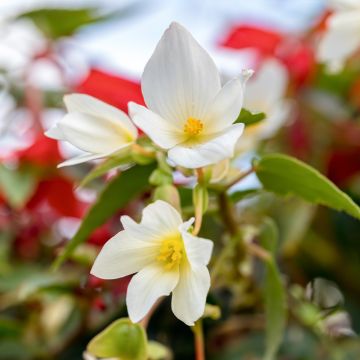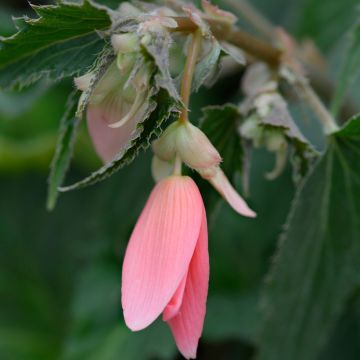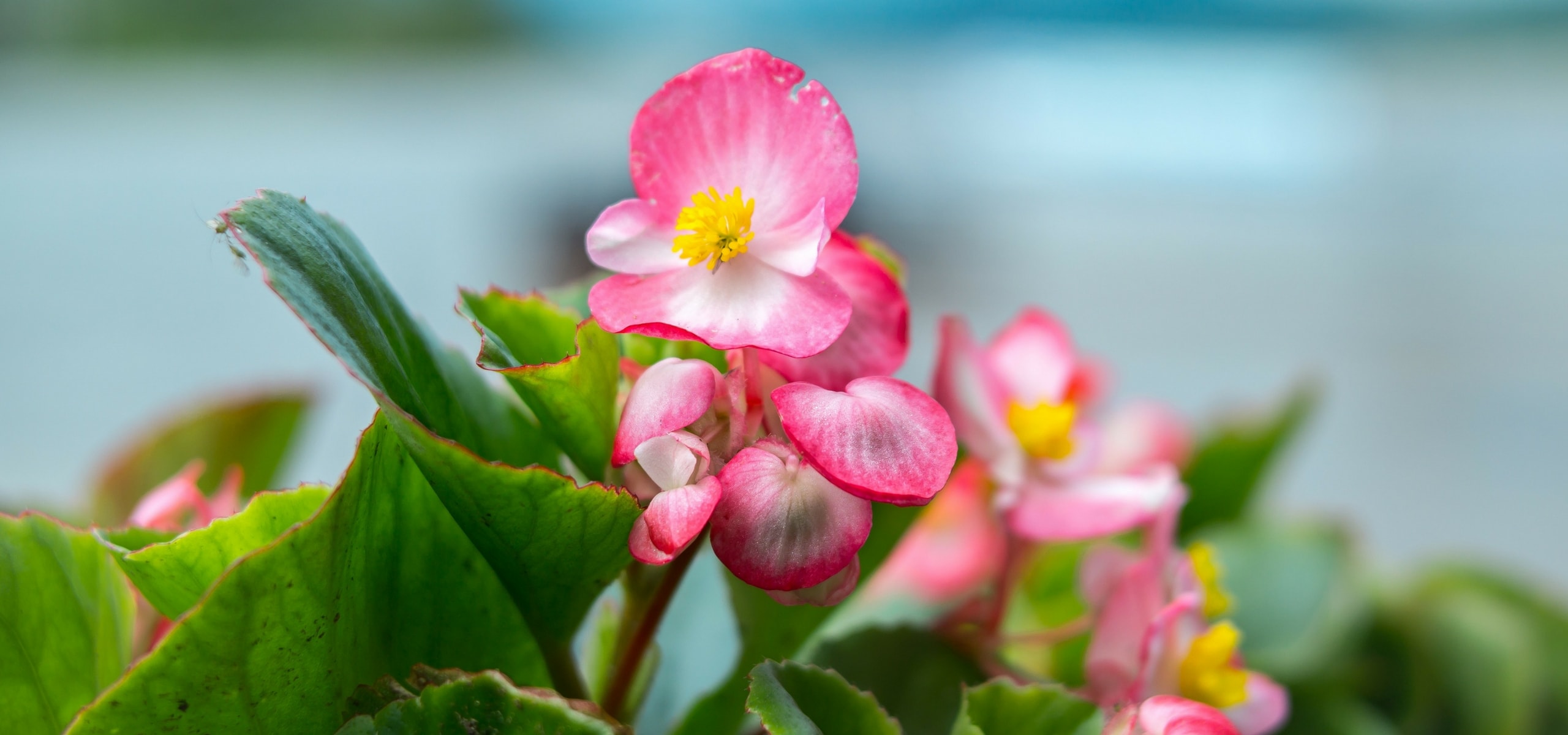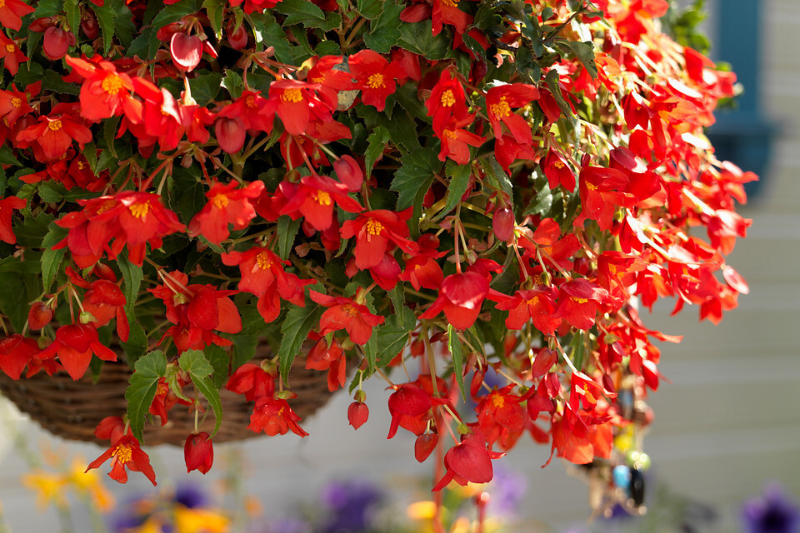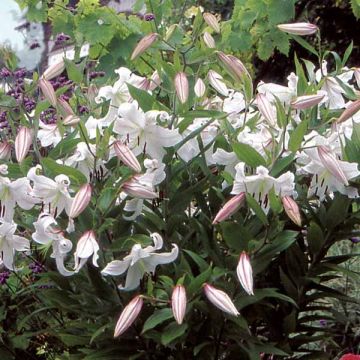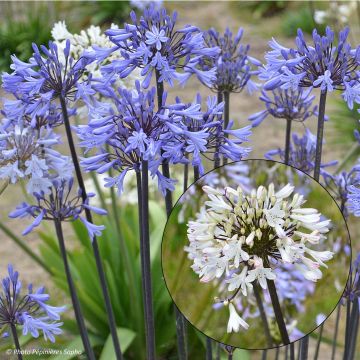

Begonia Tuberhybrida Bertinii


Begonia Tuberhybrida Bertinii
Begonia Tuberhybrida Bertinii
Begonia Tuberhybrida Bertini
Begonia, Tuberous Begonia
MAGNIFICENT AND ABUNDANT FLOWERING FROM MAY TO THE END OF OCTOBER
TEZAM, 09/10/2025
Special offer!
Receive a €20 voucher for any order over €90 (excluding delivery costs, credit notes, and plastic-free options)!
1- Add your favorite plants to your cart.
2- Once you have reached €90, confirm your order (you can even choose the delivery date!).
3- As soon as your order is shipped, you will receive an email containing your voucher code, valid for 3 months (90 days).
Your voucher is unique and can only be used once, for any order with a minimum value of €20, excluding delivery costs.
Can be combined with other current offers, non-divisible and non-refundable.
Why not try an alternative variety in stock?
View all →This plant carries a 6 months recovery warranty
More information
We guarantee the quality of our plants for a full growing cycle, and will replace at our expense any plant that fails to recover under normal climatic and planting conditions.
Would this plant suit my garden?
Set up your Plantfit profile →
Description
This Begonia Tuberhybrida 'Bertinii' has a very large tuber, a sign of exceptional vigor, confirmed by the abundance and length of its bright red flowering. The plant, which grows in an upright clump, continuously produces hundreds of flowers grouped in light and trailing clusters, with simple to semi-double petals. This variety is more tolerant of watering neglect and is suitable for both pot and hanging basket cultivation, as well as for the garden, always choosing a semi-shaded exposure.
Begonia 'Bertinii' belongs to the Begoniaceae family, it is part of the tuberous hybrid begonias whose parents mainly come from the Andean tropical forests. It is a cultivar that tirelessly flowers from July to October. At maturity, it reaches a width of 35 to 45cm (14 to 18in) and a height of 40 to 50cm (16 to 20in), forming a densely leafy ball. It starts vegetating in the middle of spring. Its leaves are deciduous, fleshy, dark green, alternate, heart-shaped, with toothed edges. The laminae are always asymmetrical and have a waxy texture; the petioles have stipules at their base. The stems of this begonia are brittle. Its flowers are either single or semi-double, with slightly open cups, bright red around a heart of yellow stamens, grouped in small trailing clusters. After flowering, the plant goes into dormancy. The tubers will be cultivated like those of Dahlias.
Begonias are unrivalled for decorating shaded or semi-shaded areas, even in the morning sun like this 'Bertinii' variety. They are also comfortable in well-maintained flower beds, in the company of lighter flowers such as compact gauras and baby's breath, as well as in pots on the terrace or balcony. This superb variety will be perfectly showcased in hanging baskets, but also in a large pot, in the conservatory or in the veranda. Lastly, it is good to know that there are hardy begonias, like Begonia grandis.
Report an error about the product description
Begonia Tuberhybrida Bertinii in pictures


Plant habit
Flowering
Foliage
Botanical data
Begonia
Tuberhybrida Bertini
Begoniaceae
Begonia, Tuberous Begonia
Cultivar or hybrid
Other Begonias
View all →Planting and care
Plant your 'Bertinii' begonias in a shady or slightly sunny location, in light and moist soil rich in humus. Begonias don't like heavy soils, so lighten it if necessary with some sand. Plant them after the last frost, one per pot with a diameter of about twenty cm, or spaced 25cm (10in) apart in open ground. Position the tuber with the concave (hollow) part facing upwards and cover with 5cm (2in) of soil. Just like with Dahlias, you can speed up their growth cycle by planting them as early as February, in pots, kept sheltered, and taking them outside in May. Water regularly. Fertilize the begonias at planting, and then twice a month during the growing season. Remove faded flowers. Dig up the bulbs before the first frost, and store them in a bit of peat, in a dry and cool place, during winter. It is a shade plant that will grow better if it gets a few hours of sunlight per day. It prefers light soils rich in organic matter (well-decomposed garden compost) that do not retain moisture. Additionally, it is quite susceptible to powdery mildew and nematodes and requires regular but not excessive watering. Begonias are frost-sensitive plants, so they do not tolerate negative temperatures. For this reason, they are often cultivated in containers that can easily be brought indoors in heated greenhouses or under a veranda at the first signs of cold weather. If they are planted in open ground, it is time to remove them and store them sheltered until the following spring.
Planting period
Intended location
Care
Planting & care advice
-
, onOrder confirmed
Reply from on Promesse de fleurs
Similar products
Haven't found what you were looking for?
Hardiness is the lowest winter temperature a plant can endure without suffering serious damage or even dying. However, hardiness is affected by location (a sheltered area, such as a patio), protection (winter cover) and soil type (hardiness is improved by well-drained soil).

Photo Sharing Terms & Conditions
In order to encourage gardeners to interact and share their experiences, Promesse de fleurs offers various media enabling content to be uploaded onto its Site - in particular via the ‘Photo sharing’ module.
The User agrees to refrain from:
- Posting any content that is illegal, prejudicial, insulting, racist, inciteful to hatred, revisionist, contrary to public decency, that infringes on privacy or on the privacy rights of third parties, in particular the publicity rights of persons and goods, intellectual property rights, or the right to privacy.
- Submitting content on behalf of a third party;
- Impersonate the identity of a third party and/or publish any personal information about a third party;
In general, the User undertakes to refrain from any unethical behaviour.
All Content (in particular text, comments, files, images, photos, videos, creative works, etc.), which may be subject to property or intellectual property rights, image or other private rights, shall remain the property of the User, subject to the limited rights granted by the terms of the licence granted by Promesse de fleurs as stated below. Users are at liberty to publish or not to publish such Content on the Site, notably via the ‘Photo Sharing’ facility, and accept that this Content shall be made public and freely accessible, notably on the Internet.
Users further acknowledge, undertake to have ,and guarantee that they hold all necessary rights and permissions to publish such material on the Site, in particular with regard to the legislation in force pertaining to any privacy, property, intellectual property, image, or contractual rights, or rights of any other nature. By publishing such Content on the Site, Users acknowledge accepting full liability as publishers of the Content within the meaning of the law, and grant Promesse de fleurs, free of charge, an inclusive, worldwide licence for the said Content for the entire duration of its publication, including all reproduction, representation, up/downloading, displaying, performing, transmission, and storage rights.
Users also grant permission for their name to be linked to the Content and accept that this link may not always be made available.
By engaging in posting material, Users consent to their Content becoming automatically accessible on the Internet, in particular on other sites and/or blogs and/or web pages of the Promesse de fleurs site, including in particular social pages and the Promesse de fleurs catalogue.
Users may secure the removal of entrusted content free of charge by issuing a simple request via our contact form.
The flowering period indicated on our website applies to countries and regions located in USDA zone 8 (France, the United Kingdom, Ireland, the Netherlands, etc.)
It will vary according to where you live:
- In zones 9 to 10 (Italy, Spain, Greece, etc.), flowering will occur about 2 to 4 weeks earlier.
- In zones 6 to 7 (Germany, Poland, Slovenia, and lower mountainous regions), flowering will be delayed by 2 to 3 weeks.
- In zone 5 (Central Europe, Scandinavia), blooming will be delayed by 3 to 5 weeks.
In temperate climates, pruning of spring-flowering shrubs (forsythia, spireas, etc.) should be done just after flowering.
Pruning of summer-flowering shrubs (Indian Lilac, Perovskia, etc.) can be done in winter or spring.
In cold regions as well as with frost-sensitive plants, avoid pruning too early when severe frosts may still occur.
The planting period indicated on our website applies to countries and regions located in USDA zone 8 (France, United Kingdom, Ireland, Netherlands).
It will vary according to where you live:
- In Mediterranean zones (Marseille, Madrid, Milan, etc.), autumn and winter are the best planting periods.
- In continental zones (Strasbourg, Munich, Vienna, etc.), delay planting by 2 to 3 weeks in spring and bring it forward by 2 to 4 weeks in autumn.
- In mountainous regions (the Alps, Pyrenees, Carpathians, etc.), it is best to plant in late spring (May-June) or late summer (August-September).
The harvesting period indicated on our website applies to countries and regions in USDA zone 8 (France, England, Ireland, the Netherlands).
In colder areas (Scandinavia, Poland, Austria...) fruit and vegetable harvests are likely to be delayed by 3-4 weeks.
In warmer areas (Italy, Spain, Greece, etc.), harvesting will probably take place earlier, depending on weather conditions.
The sowing periods indicated on our website apply to countries and regions within USDA Zone 8 (France, UK, Ireland, Netherlands).
In colder areas (Scandinavia, Poland, Austria...), delay any outdoor sowing by 3-4 weeks, or sow under glass.
In warmer climes (Italy, Spain, Greece, etc.), bring outdoor sowing forward by a few weeks.


































